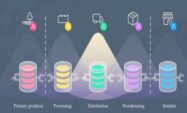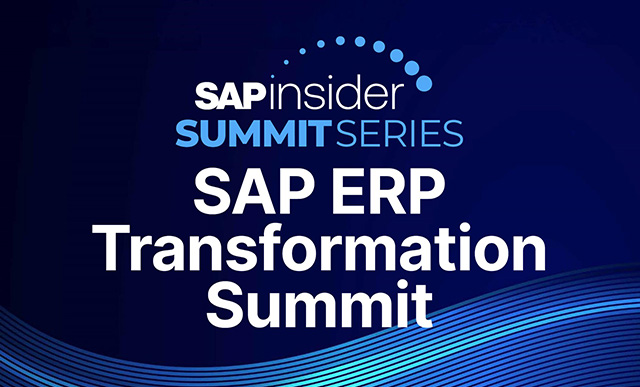SAP APO
Filter By
Browse By
- SAP Analytics and AI
- SAP Application Development and Integration
- All SAP Application Development and Integration
- SAP ABAP
- SAP ABAP Development Tools
- SAP ABAP Test Cockpit
- SAP API Management
- SAP BAPI
- SAP Basis
- SAP BRF
- SAP Business Application Studio
- SAP CMS
- SAP Design Studio
- SAP Development Tools
- SAP DevOps
- SAP EAI
- SAP EDI
- SAP Extension Suite
- SAP Fiori
- SAP Fiori Elements
- SAP Integration Suite
- SAP Low Code Application Development
- SAP Low Code Automation
- SAP Netweaver
- SAP Release Management
- SAP UI5
- SAP Web Application Server
- SAP Web IDE
- SAP Business Process Management
- SAP Center of Excellence
- SAP CIO
- SAP Customer Experience
- SAP Data and Data Management
- All SAP Data and Data Management
- SAP BW
- SAP BW/4HANA
- SAP Crystal Reports
- SAP Data Archiving
- SAP Data Center
- SAP Data Governance
- SAP Data Integration
- SAP Data Migration
- SAP Data Quality
- SAP Data Services
- SAP Data Strategy
- SAP Data Visualization
- SAP Data Warehouse Cloud
- SAP DMS
- SAP Document Control
- SAP EIM
- SAP ETL
- SAP ETL Tools
- SAP HANA
- SAP HANA Administration
- SAP HANA Deployment Infrastructure
- SAP HANA Studio
- SAP Master Data
- SAP Master Data Governance
- SAP MDM
- SAP Enterprise Architect
- SAP Enterprise Asset Management
- SAP ERP
- SAP Finance
- All SAP Finance
- SAP Accounting
- SAP AR AP
- SAP Asset Accounting
- SAP Billing Systems
- SAP BPC
- SAP BRIM
- SAP Cash Management
- SAP Central Finance
- SAP Controlling
- SAP COPA
- SAP Cost Center Accounting
- SAP Currency Risk
- SAP e-invoicing
- SAP FICO
- SAP Finance Automation
- SAP Advanced Financial Closing
- SAP Financial Consolidation
- SAP Financial Planning
- SAP FX Risk
- SAP General Ledger
- SAP Global Tax Management
- SAP Hyperion
- SAP Order to Cash
- SAP Payment Processing
- SAP Profitability Analysis
- SAP Rebate Management
- SAP S/4HANA Finance
- SAP SWIFT Compliance
- SAP Treasury Management
- SAP Universal Journal
- SAP Governance Risk and Compliance
- SAP Human Capital Management
- SAP Intelligent Technologies
- SAP Platform and Technology
- All SAP Platform and Technology
- SAP Business Technology Platform
- SAP Cloud
- SAP Cloud Connector
- SAP Cloud Integration Platform
- SAP Cloud Migration
- SAP Cloud Platform
- SAP Cloud Providers
- SAP Cloud Strategy
- SAP Digital Signature
- SAP Container Platform
- SAP HANA Enterprise Cloud
- SAP Digital Asset Management
- SAP Smart Forms
- SAP HEC
- SAP Digital Integration Hub
- SAP Hyperscalers
- SAP Infrastructure
- SAP Messaging
- SAP Quality and Testing
- SAP Security
- SAP Spend Management
- SAP Supply Chain Management
- All SAP Supply Chain Management
- SAP APO
- SAP Asset Management
- SAP Business Network
- SAP Digital Manufacturing Cloud
- SAP Digital Twin
- SAP EWM
- SAP IBP
- SAP Inventory Management
- SAP Label Printing
- SAP Logistics
- SAP Manufacturing
- SAP Manufacturing Automation
- SAP MES
- SAP MII
- SAP MM
- SAP MRO
- SAP MRP
- SAP Order Management
- SAP Plant Maintenance
- SAP PLM
- SAP Production Planning
- SAP S&OP
- SAP SD
- SAP SPM
- SAP Supply Chain Planning
- SAP Track and Trace
- SAP Transportation Management
- SAP System Administration
Supply Chain Management: SAP APO
We are encountering endless advancements in technology and increasing levels of globalization. Businesses are now competing in an unpredictable world. Consumer shopping habits are changing, making sales and operational planning both highly important and challenging. It is important to keep modernizing to get ahead of your competition.
What is SAP APO?
SAP APO stands for Advanced Planner and Optimizer. It is a component complementing the SAP ERP Central Component (ECC) logistics and supply chain processes, like procurement, production, and sales. SAP APO is designed to improve the availability of products, putting customers at the center of the process.
SAP APO has four key capabilities:
- Demand Planning (DP). Analyze sales, consumer trends, historical patterns, and seasonality data to optimize your ability to meet your consumer demand most efficiently.
- Supply Network Planning (SNP). Focused on reducing inventory, safety stock management, and having a realistic supply plan. It supports hierarchical data structures with capabilities to consolidate data into families, versus combing extensive data for individual SKU’s, plants, or warehouses.
- Production Planning and Detail Scheduling (PPDS). Used for creating procurement proposals for in-house production or external procurement to cover product requirements. PPDS covers demand, excess inventory, resource planning, production monitoring, and modifications to the plan.
- Global Available to Promise (GATP). A module that searches to determine if product is available at specific times, and for quantities that satisfy the customer demand. The module works to optimize your customer demand fill rates.
Benefits of an SAP APO implementation are:
- Improvement in profit margins
- Reduced purchasing costs
- Reduced production and logistics costs
- Improved inventory management
- Improved management.
Technical resource partners for consideration might be – SAP, Gib, or Reveal.
Key considerations for SAPinsiders are:
Supply Chain Management: SAP APO
We are encountering endless advancements in technology and increasing levels of globalization. Businesses are now competing in an unpredictable world. Consumer shopping habits are changing, making sales and operational planning both highly important and challenging. It is important to keep modernizing to get ahead of your competition.
What is SAP APO?
SAP APO stands for Advanced Planner and Optimizer. It is a component complementing the SAP ERP Central Component (ECC) logistics and supply chain processes, like procurement, production, and sales. SAP APO is designed to improve the availability of products, putting customers at the center of the process.
SAP APO has four key capabilities:
- Demand Planning (DP). Analyze sales, consumer trends, historical patterns, and seasonality data to optimize your ability to meet your consumer demand most efficiently.
- Supply Network Planning (SNP). Focused on reducing inventory, safety stock management, and having a realistic supply plan. It supports hierarchical data structures with capabilities to consolidate data into families, versus combing extensive data for individual SKU’s, plants, or warehouses.
- Production Planning and Detail Scheduling (PPDS). Used for creating procurement proposals for in-house production or external procurement to cover product requirements. PPDS covers demand, excess inventory, resource planning, production monitoring, and modifications to the plan.
- Global Available to Promise (GATP). A module that searches to determine if product is available at specific times, and for quantities that satisfy the customer demand. The module works to optimize your customer demand fill rates.
Benefits of an SAP APO implementation are:
- Improvement in profit margins
- Reduced purchasing costs
- Reduced production and logistics costs
- Improved inventory management
- Improved management.
Technical resource partners for consideration might be – SAP, Gib, or Reveal.
Key considerations for SAPinsiders are:
- Leverage collaborative demand planning with APO. Anjali Butley is a business analyst with over 18 years of SAP experience in design and development of integrated supply chain solutions. Read her article on the benefits of developing an accurate demand plan with better communication, transparency, and quick decision-making.
- Address planning and scheduling challenges with APO industry extensions. Rajesh Raycurrently leads the SAP SCM product area at IBM Global Business Services. Read his insights to address the planning and scheduling challenges faced by the auto and retail industries.
- Manage promotions planning in SAP APO. Alok Jaiswal, is a consultant at Infosys Limited and has more than six years of experience in IT and ERP in supply chain. See his example of how promotional planning can be configured into SAP APO, which helps you improve forecast accuracy.
310 results
-

 Premium
Premium
BI Report Text Searching in the Semantic Layer Without Duplications
Reading time: 26 mins
Learn a new method for automatically aggregating data that replaces the laborious task of manually aggregating this kind of data. This technique generates additional new semantic levels of characteristics as description keys. Using these new semantic characteristic keys, users can easily generate reports with any existing descriptive text without duplications. Key Concept A semantic type...…
-

 Premium
Premium
A Look at Some Enhancements Under the SAP Transportation Management Hood
Reading time: 27 mins
Learn about major enhancements introduced in SAP Transportation Management (SAP TM) 9.1 that will help in managing transportation process across industries. Find enhanced transportation planning functionality that enables you to efficiently manage truck loads. Find out how functionalities such as the collaboration portal and strategic freight procurement enable close collaboration with your partners. Discover how...…
-

 Premium
Premium
Special Report: Implementing SAP HANA – An End-to-End Perspective
Reading time: 69 mins
In this exclusive special report, get an in-depth, step-by-step look at the aspects of implementing BI solutions on SAP HANA. Gain insight into how ETL integrates with SAP HANA and how SAP BusinessObjects BI 4.0 analyzes and visualizes the data stored in SAP HANA. Key Concept SAP HANA modeling is a process whereby a developer...…
-
-

Live from SAPinsider Studio: GOJO Industries on Optimizing Production Planning and Knowledge Management
John Hooker of GOJO Industries, producer of Purell, joins SAPinsider Studio at the SCM 2016 event in Las Vegas to discuss the company’s recent move from their home-grown legacy system to SAP ECC 6.0 and the successful SAP add-on and optimization projects that have streamlined production and knowledge management. Here is an edited transcript of...…
-

Control Compliance and Business Risk with Streamlined Role Maintenance: Q&A on BRM Functionality and Configuration
Reading time: 10 mins
A critical element of an efficient and compliant SAP system is control over user access to your business systems. The Business Role Management (BRM) component of SAP Access Control 10.0 provides SAP customers with comprehensive, centralized monitoring and maintenance of the role definitions that determine this access. BRM offers not only a single repository for...…
-

Curating a Digital Discovery Experience
Reading time: 6 mins
Successful planning and budgeting requires insights based on accurate data. Gaining this insight can be difficult, however — organizations often rely on outdated processes that do not deliver timely, accurate insights. Discover how a business planning approach that focuses on consolidating data, modeling forecasts, and automating budgets can help you develop reliable reports and improve…
-

Wading Into and Out of the Trough with AI
Reading time: 5 mins
Two paths lead the way to the use of artificial intelligence (AI). One is the more likely direction. Membership Required You must be a member to access this content.View Membership LevelsAlready a member? Log in here
-
-

EWM advice from Chris Moose: Q&A from the live Forum on SAP Extended Warehouse Management (Transcript)
Reading time: 10 mins
AJ Whalen, Wellesley Information Services I recently moderated a web forum with IBM‘s Chris Moose on implementing SAP Extended Warehouse Management (SAP EWM). Chris took questions on the WM to EWM conversion, handling task creation, HUs and pick exceptions, goods issue, serial numbers, end user training, and other topics. For the full Q&A, you can…
-

Tips for SAP GRC audits: Q&A with GRC 2013 speaker Marc Jackson (transcript)
Reading time: 10 mins
In his session at GRC 2013, compliance and security Marc Jackson makes the case for auditing your SAP GRC systems – something not to be overlooked in your system audits. In a recent online Q&A on Insider Learning Network, Turnkey Consulting’s Marc Jackson took questions on GRC audits, useful transactions and tools, auditing performance and…
-

- SAP Supply Chain Planning
 Premium
Premium
Eliminating Data Silos for Supply Chain Analytics
Reading time: 3 mins
Fragmentation of data remains a key obstacle on the path of integrated supply chain planning. Many organizations have invested in point systems for planning various elements of supply chains over the years, have legacy systems, and also have data pertaining to supply chain residing in enterprise systems like ERP, CRM etc. With the advent of…
Become a Member
Unlimited access to thousands of resources for SAP-specific expertise that can only be found here.
Become a Partner
Access exclusive SAP insights, expert marketing strategies, and high-value services including research reports, webinars, and buyers' guides, all designed to boost your campaign ROI by up to 50% within the SAP ecosystem.
Upcoming Events
-

SAPinsider ERP Transformation Summit
October 22 - 23, 2025
New Orleans, Louisiana
United States
View Event
Related Vendors
Your request has been successfully sent

